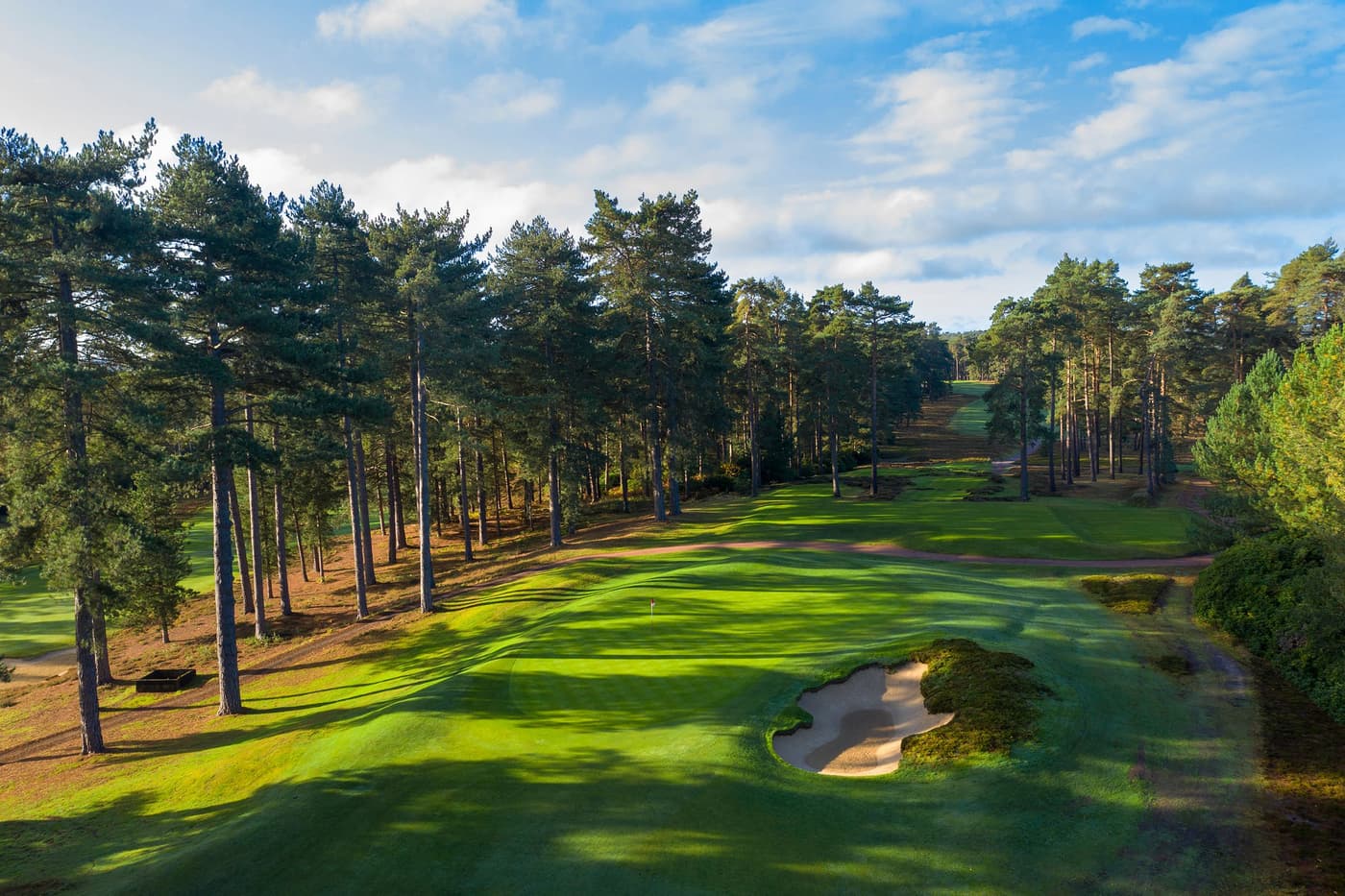
Berkshire (Red)
Ascot, England
- AddressSwinley Rd, Winkfield Row, Ascot SL5 8AY, UK
- Championships hosted
Many people say that there is nothing better than a day’s golf amongst the forest, heather and springy turf of the Berkshire Golf Club. Both the Red and the Blue courses are charming. The Red course is considered to be the more senior of the two, but frankly there is little to choose between them. Indeed it is likely that they will both merge into one unless you have been sufficiently fortunate to play them more than once.
Herbert Fowler, who had a gift for blending golf courses into their natural surroundings, laid out both courses in 1928. Fowler clearly did a great job because only minor changes have since been made to his original design. The land was once the hunting forest of the royals and dates back to the reign of Queen Anne. Each hole is played in seclusion, the mature sycamore, birch, chestnut and pine trees providing majestic tunnels for the rippled fairways.


The Red acquired its name from a military analogy with the Blue taking the opposite side. The Red course is highly unusual in design. The configuration of six par threes, six par fives and six par fours provide for much interest, variety and entertainment.
You need a straight and steady game to score well here otherwise you can very quickly become accustomed to chipping sideways out of the trees or hacking out of the heather. Needless to say, accuracy rather than length is all-important. The Red, measuring 6,369 yards from the white tees (5,733 from the reds) is the longer of the Berkshire’s two courses and it plays over slightly higher ground than the Blue.
The Berkshire is closely linked with amateur golf; its own Berkshire Trophy has produced some famous winners, including Nick Faldo and Sandy Lyle. Numerous ladies amateur competitions have also been held at the Berkshire.
If there is a downside to the Red course, it would be the par fives – four of the six are short by today’s standards. However, the par fours and threes more than make up for the minor criticism – after all, the short par fives might offer a birdie or two, or even an eagle.
There are many strong holes on the Red course but the best is probably the 6th, a shortish par four measuring 360 yards from the white tees. This hole doglegs to the right and requires an accurate drive to the left hand side of the fairway in order to leave a short approach shot to a raised green.
The Red’s hallmark is most definitely the six par threes – they are all quality in their own right. Actually, we think The Berkshire is delightful and will provide a memorable day out for any serious golfer.
Following a historic review of The Berkshire courses in collaboration with Adam Lawrence of Oxford Golf Consulting, architect Tim Lobb’s design firm commenced a programme of bunker and landscape restoration on both the Red and Blue layouts in 2016 and this work is ongoing.
Course Reviews
Leave a Review
This course has not been reviewed.
If you have played this course, consider .
Thanks for the review
Your review has been successfully submitted and will be reviewed for approval.
Course Reviewed
You’ve already submitted a review for this course.
Course Architect
View All
Herbert Fowler was introduced to golf at Royal North Devon when visiting nearby Bideford on banking business in 1879 and he became a club member, winning the Prince of Wales Medal two years later.

